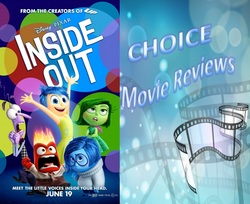
First, my score guide:
Quality: This score indicates entertainment value.
0 stars is horrible, while 5 stars is spectacular.
Political: This score addresses political messaging.
0 stars is aggressively anti-Conservative, while 5 stars is highly pro-Conservative. 3 stars is apolitical.
Moral/Religious (M/R): This score addresses moral and religious messaging.
0 stars is either intensely immoral or all-out, needless assault on Christianity. 5 stars is either great moral messaging or highly pro-Christian. 3 stars is inoffensive either way.
Quality: This score indicates entertainment value.
0 stars is horrible, while 5 stars is spectacular.
Political: This score addresses political messaging.
0 stars is aggressively anti-Conservative, while 5 stars is highly pro-Conservative. 3 stars is apolitical.
Moral/Religious (M/R): This score addresses moral and religious messaging.
0 stars is either intensely immoral or all-out, needless assault on Christianity. 5 stars is either great moral messaging or highly pro-Christian. 3 stars is inoffensive either way.
Inside Out
Quality – 3 stars, Political – 4 stars, M/R – 3 stars
Quality – 3 stars, Political – 4 stars, M/R – 3 stars
I love Pixar. Though not perfect (Wall-E, Cars 2), the famed animation studio almost always generates thrilling experiences—and usually, its films aren’t preachy (except for Wall-E and Cars 2).
Visually impressive and fairly funny, “Inside Out” drags some, due to endless metaphors and symbols. Is it preachy? No, not at all. In fact, the message is sound. Is it worth seeing? Sure—if only for the performances of 11-year-old Riley’s five emotions, headlined by Joy (Amy Poehler) and Sadness (Phyllis Smith). Though Joy is the star, Sadness is clearly the key, as “Inside Out” teaches the value of letting kids experience sadness rather than suppress it. The other three emotions (Anger-Lewis Black, Disgust-Mindy Kaling, Fear-Bill Hader) provide comedic background that works, if not hilariously.
This is the story of a young girl going through the hard transition of uprooting from one place (Minnesota) and moving with her parents to another (San Francisco). The whole experience is conveyed through her five emotions, who must grapple with change while holding Riley together. Naturally, since this is Pixar and most everything occurs in Riley’s mind, the cartoonistry is terrific; the action, fun.
Girls will connect easily with Riley’s emotions, while boys might struggle a bit. We guys generally experience movies with all five of our emotions (Anger, Anger, Anger, Lust, Confusion), but this film only requires Confusion. In fact, Confusion has himself a field day.
The first and last quarters are brilliant, entertaining, and touching. The inner half, however, wanders badly with too much psychology, and it made dozens of kids around me shift with disinterest (as did I). I kept tugging on my wife’s sleeve, saying, “I wanna go home. I wanna get ice cream. I wanna go pee-pee, then cry for hours without knowing waaahhhhyyy.”
One stint where Joy and Sadness endure an “Abstract Shortcut” resembles awful performance art in a community college courtyard. Yikes. The whole section feels like a pot-scented clown reciting ‘60’s beatnik poetry, saying, “Kids, this isn’t funny or interesting, but it’s trying to be! And it’s artsy, too! Do you want a hit off this?”
I listened to children talk with their parents as they left, and they sounded perplexed. I heard no “And then there was a train, and then the puppy made me laugh, and then…”
Instead, they were saying, “I regret, Mother, the way I acted out earlier today—perhaps due to prenatal impressions visiting themselves upon present times. Yes, that must be it, for I was projecting my own insecurities upon you. I believe the word I’m searching for is ‘sorry’—yes, I am sorry I posted pictures of you and Daddy online.”
“Inside Out” will no doubt wow the critics, as it plays like a 2nd-Semester Psych course adapted in 3-D animation. I expect phrases like “childhood exuberance conveyed through a thoughtful study, all with delightful sights and winning performances.” Yes, the accolades will be many—and justified. But while kids will like it enough, and some adults will discuss it for hours, I just didn’t find it that enjoyable.
Is “Inside Out” the next “Wall-E?” No. Is it the next “Cars 2?” Goodness, no! But if I combined “Finding Nemo” with an hour of looking at a painting and saying, “This really speaks to me”…
…I’d be watching “Inside Out” a second time. Which I won’t.
Visually impressive and fairly funny, “Inside Out” drags some, due to endless metaphors and symbols. Is it preachy? No, not at all. In fact, the message is sound. Is it worth seeing? Sure—if only for the performances of 11-year-old Riley’s five emotions, headlined by Joy (Amy Poehler) and Sadness (Phyllis Smith). Though Joy is the star, Sadness is clearly the key, as “Inside Out” teaches the value of letting kids experience sadness rather than suppress it. The other three emotions (Anger-Lewis Black, Disgust-Mindy Kaling, Fear-Bill Hader) provide comedic background that works, if not hilariously.
This is the story of a young girl going through the hard transition of uprooting from one place (Minnesota) and moving with her parents to another (San Francisco). The whole experience is conveyed through her five emotions, who must grapple with change while holding Riley together. Naturally, since this is Pixar and most everything occurs in Riley’s mind, the cartoonistry is terrific; the action, fun.
Girls will connect easily with Riley’s emotions, while boys might struggle a bit. We guys generally experience movies with all five of our emotions (Anger, Anger, Anger, Lust, Confusion), but this film only requires Confusion. In fact, Confusion has himself a field day.
The first and last quarters are brilliant, entertaining, and touching. The inner half, however, wanders badly with too much psychology, and it made dozens of kids around me shift with disinterest (as did I). I kept tugging on my wife’s sleeve, saying, “I wanna go home. I wanna get ice cream. I wanna go pee-pee, then cry for hours without knowing waaahhhhyyy.”
One stint where Joy and Sadness endure an “Abstract Shortcut” resembles awful performance art in a community college courtyard. Yikes. The whole section feels like a pot-scented clown reciting ‘60’s beatnik poetry, saying, “Kids, this isn’t funny or interesting, but it’s trying to be! And it’s artsy, too! Do you want a hit off this?”
I listened to children talk with their parents as they left, and they sounded perplexed. I heard no “And then there was a train, and then the puppy made me laugh, and then…”
Instead, they were saying, “I regret, Mother, the way I acted out earlier today—perhaps due to prenatal impressions visiting themselves upon present times. Yes, that must be it, for I was projecting my own insecurities upon you. I believe the word I’m searching for is ‘sorry’—yes, I am sorry I posted pictures of you and Daddy online.”
“Inside Out” will no doubt wow the critics, as it plays like a 2nd-Semester Psych course adapted in 3-D animation. I expect phrases like “childhood exuberance conveyed through a thoughtful study, all with delightful sights and winning performances.” Yes, the accolades will be many—and justified. But while kids will like it enough, and some adults will discuss it for hours, I just didn’t find it that enjoyable.
Is “Inside Out” the next “Wall-E?” No. Is it the next “Cars 2?” Goodness, no! But if I combined “Finding Nemo” with an hour of looking at a painting and saying, “This really speaks to me”…
…I’d be watching “Inside Out” a second time. Which I won’t.

 RSS Feed
RSS Feed